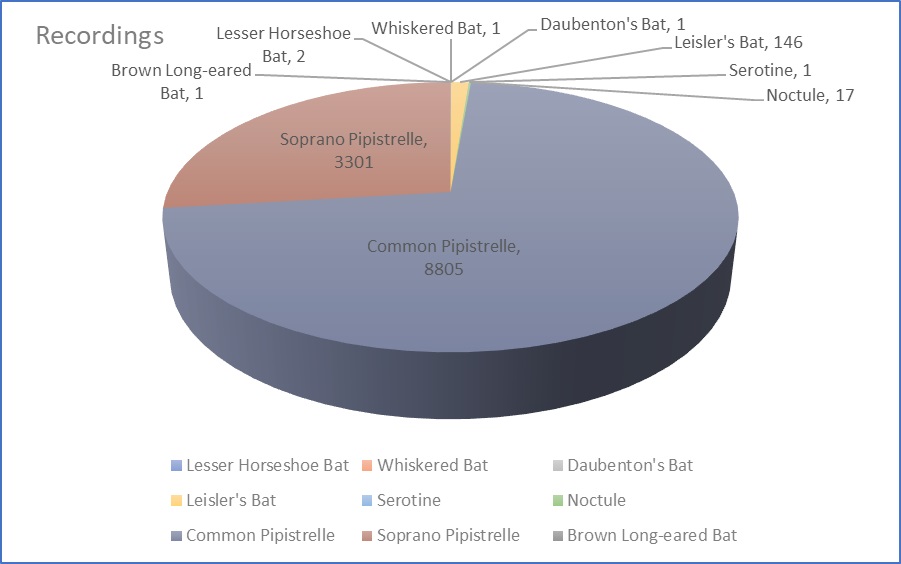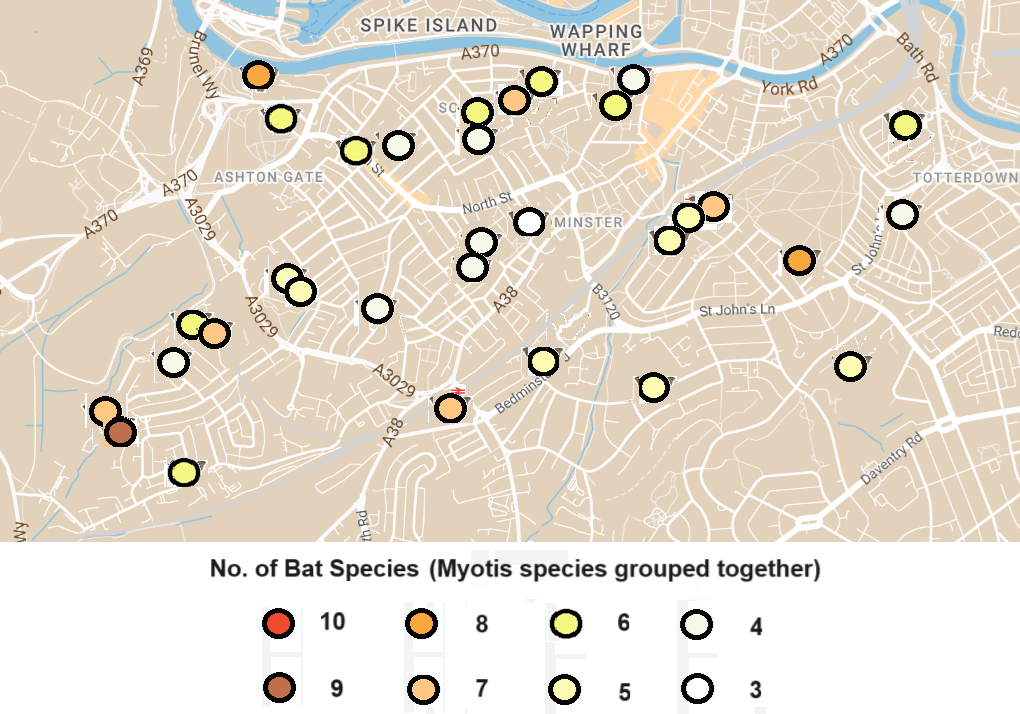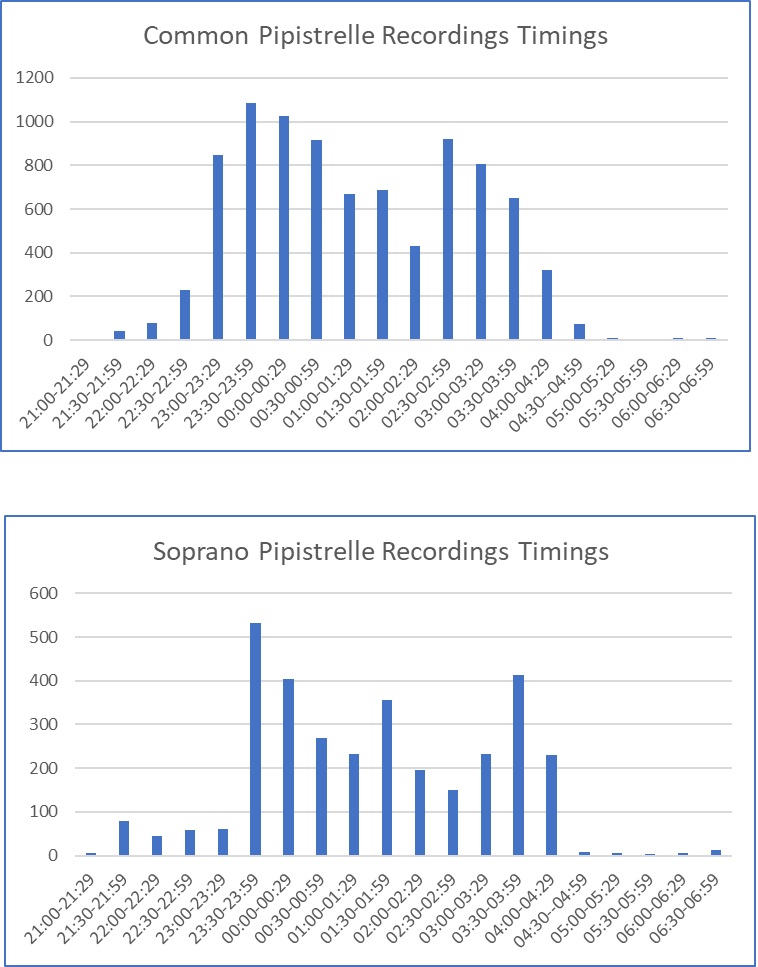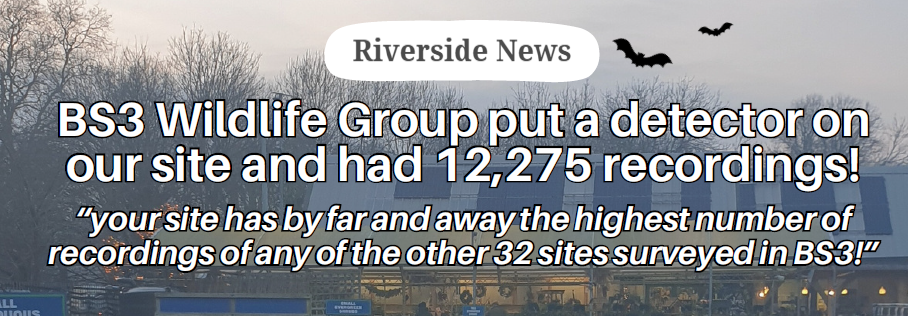Bats at Riverside!
Bat activity detected at Riverside!
BS3 Wildlife Group put a detector on our site and had 12,275 recordings!
“your site has by far and away the highest number of recordings of any of the other 32 sites surveyed in BS3!”
In August, we were approached by the BS3 Wildlife Group with Peter Loy-Hancocks, Manor Woods Valley Group Chair & Ecologist, as a potential site for one of their bat detectors. They have surveyed 32 sites (mainly gardens) across BS3in order to determine the variety and distribution of bats in our area.
Riverside were thrilled to take part as we have a lot of wildlife passing through daily – very curious to find out what’s out there when the team are away!
The detector was placed on top of our toilet block (glamorous!) and pointed towards the New Cut, hoping to hear passing bats looking for food. Peter came back to us with some amazing findings and explained the results to us:
_______________________________________________________
Species Recordings %
Lesser Horseshoe Bat 2 0.02
Whiskered Bat 1 0.01
Daubenton's Bat 1 0.01
Leisler's Bat 146 1.19
Serotine 1 0.01
Noctule 17 0.14
Common Pipistrelle 8805 71.73
Soprano Pipistrelle 3301 26.89
Brown Long-eared Bat 1 0.01
12275 100.00

I've sifted the data so that this version only contains bat (and other species) identifications with a more than 50% chance of being correct. Each individual recording does not necessarily represent a different bat, as a single bat (typically a Common Pipistrelle) flying in circles in front of the detector will be disproportionately represented.
Many of the other BS3 results I have so far have only four species, Leisler's Bat and Noctule, and Common and Soprano Pipistrelles. You have many more than that, and are only second to a garden that backs on to the Ashton wetlands area. BUT, your site has by far and away the highest number of recordings of any of the other 26 sites so far surveyed in BS3!

Common Pipistrelles normally make up about 80%-90% of the bat recordings for any survey. Your results are lower in this respect, but only because you have so many Soprano Pipistrelle recordings. This latter species is as common as the former, but is more usually associated with aquatic habitats i.e. the New Cut in your case.
Looking at the timings of recordings (see graph below) it seems likely that there aren't Common or Soprano Pipistrelle roosts nearby, but instead the bats are coming to the immediate area to feed.

The bat detector can also pick up the ultrasonic calls of some other mammals and also a couple of moth species (these are the only two for which ultrasonic comparison data exists, so far as I know), and bush-cricket 'chirrups'.
The detector can pick up Brown Rat calls, but none were recorded during the survey.
Dark Bush-cricket 66
Speckled Bush-cricket 3717
Great Green Bush-cricket 4
Green Silver-lines 3
____________________________________________________
We now know that Riverside had the highest number of nightly bat recordings of any of the 32 sites surveyed in BS3 and that it had amongst the most diverse range of species. Peter is now working on putting together a 'Bats of BS3' report which we look forward to reading and sharing.
To stay informed about all wildlife projects in the local area, Riverside recommends joining the BS3 Wildlife Group – they have a Facebook page where members share photos, sightings and projects as well as an informative newsletter to learn more about how you can help support wildlife in your area.
Want to find out more about bats! Take a look at:





